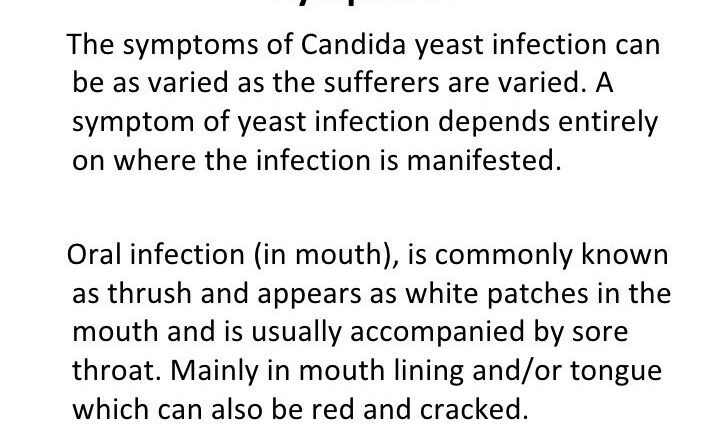How are yeast infections manifested?
The symptoms of yeast infection vary greatly depending on the location and type of agent involved. It is therefore impossible to draw a general picture.
For example, candidiasis and aspergillosis, which are among the most frequent yeast infections, can by themselves cause extremely diverse symptoms.
Candidiasis
Candida fungi proliferate mainly in the mucous membranes, skin and nails.
This distinguishes oral and digestive candidiasis, which results in the presence of a whitish “coating” on the tongue, for example, and / or pain in the esophagus or stomach.
Genital candidiasis is also frequent, in particular vaginal candidiasis favored by pregnancy, the use of contraceptives and endocrine diseases such as diabetes. It causes itching and burning in the vagina and vulva, as well as “creamy” white discharge.
Candidiasis can also reach skin folds (for example in infants) or colonize the fingernails or toenails. The onychomycoses (nail fungus) can however be caused by other types of fungi (dermatophytes).
In the most severe cases, Candida spreads throughout the body via the blood, causing often fatal “candida”.
Aspergillosis
They mainly occur in the respiratory system. They can lead to sinusitis, bronchitis (resulting in “aspergillus asthma”) and can become invasive, especially in people who have received an organ or stem cell transplant after leukemia, for example.










